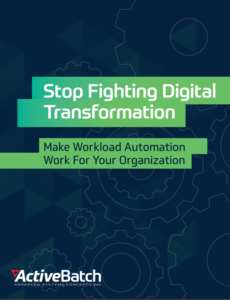The Automation Mandate Of Forrester’s 2022 Predictions

Forrester, a leading research and advisory company, has released a set of predictions explaining how technology will impact business decisions in 2022 and beyond. The report provides excellent insights into how markets and industries will evolve over the next few years, giving business and IT leaders an opportunity to be early adapters.
Consumers have flocked to digital services and online spaces in the last two years as public health measures such as lockdowns and social distancing went into effect. For organizations that were prepared for this digital boom, there was a lot to be earned in the way of customer satisfaction and market growth — for organizations that weren’t prepared, there was a lot to be learned.
Most markets and industries will continue to adapt as the COVID-19 crisis and public responses evolve. But more than anything, organizations will need to adapt to evolving consumer expectations.
Consumer Expectations Are Rapidly Evolving
Today’s consumers are increasingly digital and expect seamless, readily available and easy-to-user online services. In short, customer experiences need to continuously improve. Most organizations have, by this point, already adapted to the disruptions of 2020, meaning that industries will face a new list of challenges in 2022.
Digital Sameness
Most organizations adapted rapidly to COVID-19, rolling out remote or hybrid work, digital services, new online retail options and much more. For the most part, organizations were limited in how much consideration and planning they could afford — the COVID-19 pandemic unfolded quickly, and most businesses couldn’t afford to delay.
The result was an exaggerated “digital sameness.” Digital sameness refers to standardization across an industry, for example, all social media platforms incorporating a like function immediately after Facebook’s rollout.
The downside to digital sameness is that organizations have to go to extreme ends to differentiate themselves from crowded markets. How to distinguish a brand from competitors will be a key goal for many organizations in 2022. For the most part, this will be achieved with digital solutions.
Eliminating Manual Processes
Manual tasks are anathema to a seamless digital experience. Moreover, repetitive manual tasks can make a job much less attractive. In an era of high turnover and competition for top talent, reducing routine manual tasks to enable more creative and fruitful projects is not only a means for attracting and retaining talented personnel, but also developing solutions that overcome new challenges and attract new customers. Forrester expects that, in 2022, 10% of technology executives will prioritize investments in innovation, including expanding investments in automation to free-up resources for new initiatives .
Don’t let IT complexity hamper your digital goals
Get the latest trends and data on what’s driving transformation and how IT teams address these challenges.
New Technologies
Harnessing new digital tools will be key to differentiating brands in 2022. Forrester uses retail as an example, explaining that “experience architectures” will see growth in investment as businesses seek to leverage automation and immersive experiences in order to improve the shopping experience.
As the customer experience becomes pivotal in distinguishing a brand from competitors, businesses will require new technologies, infrastructure and architectures, a responsibility that lands with IT. Many of these initiatives will fail to deliver on expected goals unless IT is able to gain ground in automation.
Just-In-Case
Current supply chain disruptions are largely due to just-in-time fragility. As a result, Forrester expects businesses to spend 2022 shifting into just-in-case inventory in order to make supply chains more resilient.
This means that “firms are effectively doubling the size of their third-party ecosystem” as those firms seek to add more suppliers to their supply chains. But this expansion comes with its own risks, namely in the form of new endpoints for managing transactions — those endpoints and connections with third parties will need to be maintained and secure, a hefty task for short-staffed IT teams.
Forrester expects that 60% of security incidents will be caused in part by third parties. IT departments will need to maintain compliance for data and file transfers, making the need for automated MFT solutions more apparent. Having a centralized automation platform can help by enabling IT to incorporate and manage file transfers from a unified point of control.
Business Automation
The use of automation across organizations will continue to expand. Forrester expects that 70% of marketers will adopt an always-on strategy in 2022, becoming increasingly reliant on autonomous and automated solutions “with complex tech stacks.”
As automation and new digital technologies go deeper into business roles, IT teams will need to provide implementation and maintenance, integrating those tools into existing tech stacks and ensuring compliance and security over increasingly diverse digital ecosystems. Automation will be key to managing this complexity.
Cloud-Native
Businesses are scaling digital services and operations in order to maintain a competitive edge. Those systems will also need to be flexible, capable of rapidly scaling to meet unexpected spikes in demand.
Part of this need for scalability has to do with an increasing reliance on SaaS, PaaS and IaaS solutions. Forrester expects cloud-native adoption to rise for half of enterprises in 2022. New cloud strategies will rely on cloud-native resources that support a range of emerging technologies, including big data, AI and IoT.
Large cloud ecosystems have already surpassed the ability for people to manage without the use of automation. The mandate to automate in order to support scalable, cloud-first environments will be even higher in 2022.
“Rather than being supplementary or a nice-to-have, cloud-native will become the core of cloud strategy in 2022 and moving forward.”
— Forrester, Predictions 2022
Smart Infrastructure
Smart infrastructure investments will increase 40%, according to Forrester’s projections, with governments leveraging 5G, edge networks and IoT to create smart, connected ports, roads and trains.
Similar developments will be made in the private sector as businesses race to keep up with evolving consumer expectations. Automation will be key in managing data and interactions across these always-on networks, and will need to be centralized in order to prevent fragmented applications that increase security and downtime risks.
Event-Driven Architectures
Forrester expects that 35% of enterprises will focus on event-driven architecture (EDA) in 2022. Event-driven automation platforms can support no-code API adapters that are flexible and reliable, streamlining integration and supporting the use of microservices to develop new applications faster than ever.
Meeting New Challenges With Extensible Automation
In 2022 and beyond, organizations will be increasingly reliant on scalable, seamless services that depend on a variety of cloud-native and containerized services. Automation will be critical to managing these ecosystems that seek to serve consumers with efficient, always-on services.
Extensible workload automation platforms make it possible to rapidly connect almost any endpoint, utilizing APIs and other programmatic integrations to manage data across technologies.
IT teams can simplify their digital demands by choosing automation platforms that are designed as orchestration engines. The right automation solution can enable IT teams to monitor and manage processes, dependencies, endpoints and services from a centralized control panel, simplifying compliance and enabling reliable, end-to-end processes that provide seamless services to end-users.
Ready to simplify your data warehousing with workload automation?
Schedule a demo to watch our experts run jobs that match your business requirements in ActiveBatch. Get your questions answered and learn how easy it is to build and maintain your jobs.








